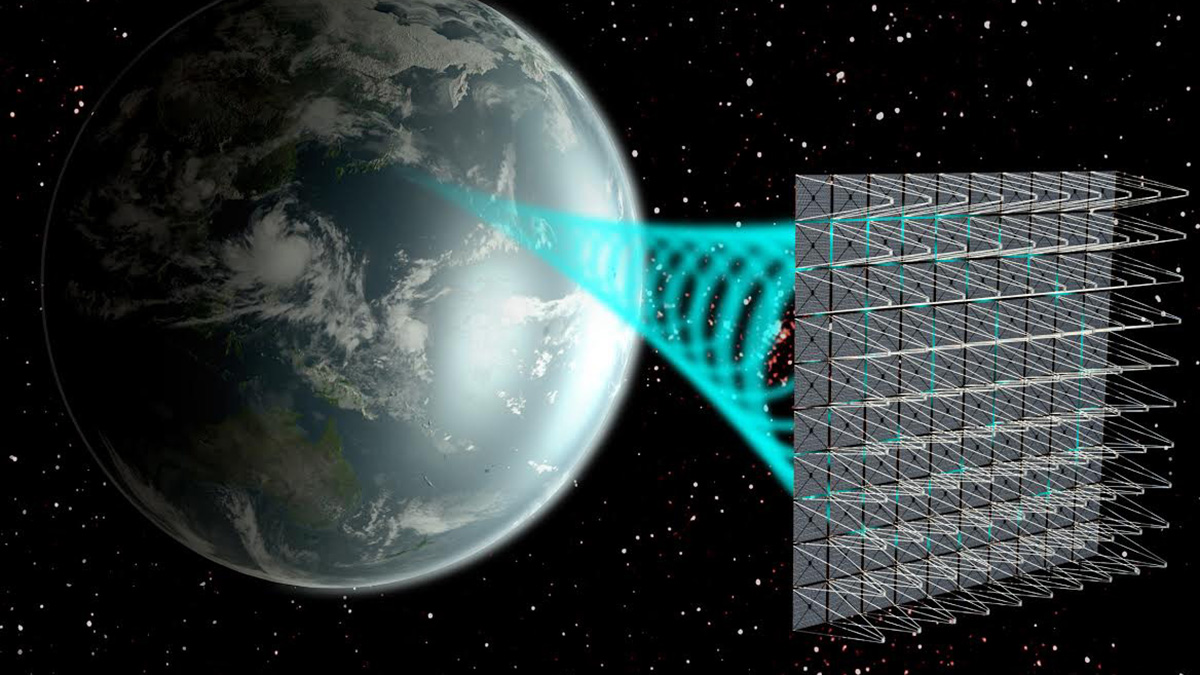One of the major problems with solar power is not just its cost – both financial (which is usually hidden by massive, market-distorting government subsidies) and environmental (likewise conveniently hidden away in the Chinese boonies) – but its unreliability.
The simple fact is that the sun doesn’t shine all the time. That variability is massively destabilising to finely-tuned electricity grids, as Texans learned the hard way.
But there is one place the sun never stops shining: space.
A team of scientists have successfully tested a solar panel prototype that can theoretically send electricity from space back to anywhere on Earth, CNN reports.
The panel, called the Photovoltaic Radio-Frequency Antenna Module (PRAM) and roughly the size of a pizza box, was first launched in May 2020, mounted to the Pentagon’s top secret X-37B drone.
Thanks to the fact that the sunlight isn’t blocked by the Earth’s atmosphere, the panel can receive more illumination that it would on Earth. So far, the prototype has generated about 10 watts, plenty to power a tablet.
But the device still hasn’t actually done the hard part yet — the much more complicated process of transmitting power back down to Earth, something the researchers are hoping to test in the upcoming years.
So it’s clear that this device is hardly the answer to our energy needs. But it’s at least proof of concept, even if two massive problems remain.
First off, actually getting the power to where it’s needed.
The transmission technologies required to make that happen are still in their infancy, but such a method of power delivery could prove to be extremely promising.
Such a transmission technology might be microwave or laser transmission. But both of those have inherent problems, not least not frying or blinding anything that strays into its path. Microwave transmission requires massive transmitter dishes and even bigger receivers – on the kilometre scale.
Secondly, there’s the fact that this is still using photovoltaic panels, with all the pollution they entail. The operational life of a solar panel in space might be indicated by the fact that the International Space Station’s panels were designed to last 15 years and are indeed being replaced.
Additionally, there’s the cost of getting the things up there in the first place. While commercial enterprises like SpaceX have slashed payload expense, it still costs an awful lot of money (and energy) to get stuff into space from Earth.
Another approach might be solar collectors – essentially, massive mirrors that reflect concentrated sunlight back to Earth, where it might heat steam turbines. The mirrors could be made of ultra-thin and light materials, reducing payload costs.
So, commercial-level space-based power generation is still a long way off. But these are the first baby steps.
“The unique advantage the solar power satellites have over any other source of power is this global transmissibility,” Paul Jaffe, PRAM principal investigator at the US Naval Research Laboratory, told CNN. “You can send power to Chicago and a fraction of a second later, if you needed, send it instead to London or Brasilia.”
Futurism
Certainly, anyone who tries to claim that ground-based solar is the answer to replacing fossil fuels is fooling themselves. Whatever is going to replace fossil fuels frankly hasn’t been invented yet. Most likely, it will involve a mix of technologies, one of which may be space-based solar.
Just remember: at the beginning of the last century almost no one could have conceived of nuclear energy.
Please share this article so that others can discover The BFD

